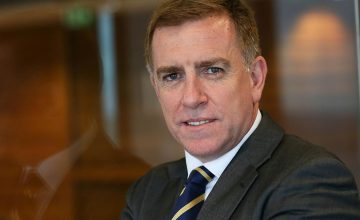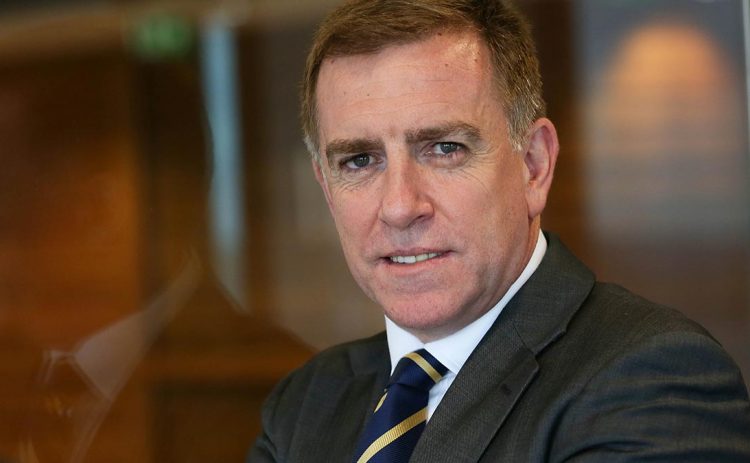
Mainstream Online Web Portal
LoginInvestors can view their accounts online via a secure web portal. After registering, you can access your account balances, periodical statements, tax statements, transaction histories and distribution statements / details.
Advisers will also have access to view their clients’ accounts online via the secure web portal.
The Point
Quick, actionable insights for investors
Income and Fixed Interest
Amy Xie Patrick: How to manage fixed income portfolios in a turning-point year
A year ago the investment base case was a US recession, an inverting yield curve, an end to the inflation fight and optimism about China reopening.
Now, at the start of 2024, it couldn’t be more different, says Pendal’s head of income strategies Amy Xie Patrick.
“Recession is nobody’s base case. China is the last place people are optimistic about.”
It’s evidence that investors need many levers to pull when navigating the cycle, says Amy.
“Risk number one is that a soft-landing narrative led by the US economic story may not end up being the case.
“The biggest risk is always what’s outside of consensus. It’s not to say that consensus can’t happen, but if the consensus is the case, markets tend to be priced for it.
“Another risk is markets pricing in six Fed cuts, despite data showing resilient growth.
In her new podcast, Amy explains how she’s preparing for risks – and opportunities – the market may not be considering.

Tim Hext: Why bonds still look better than term deposits
Play podcastTim Hext: Why bonds still look better than term deposits
Have you missed the boat on bonds? No, says our head of bond strategies Tim Hext.
“Australian 10-year bonds did briefly touch 5% at the end of October. People may look at that and say, ‘Oh, I’ve kind of missed it’.
“But around 4.5% is still very attractive if you believe inflation is going below 3%.
“When I look across the spectrum of what you can buy in bonds, government bonds are around 4.5%, state government bonds 5.25%, and bank debt around 6%.
“On term deposits, my question to investors would be: Okay, let’s assume term deposits are at 5% and you’re locking yourself into those with no liquidity.
“Where do you think on average they’re going to be over the next five or 10 years?
“I think most people would assume they’re going to be a little bit lower, not higher; and that cash rates will come down rather than go up a lot more.
“The other advantage of bonds is that they’re liquid.
“That’s particularly important if you saw a sudden sharp sell-off in equities and you’re wanting to buy them – but your money’s locked up.”

Tim Hext: Bonds offer returns and cheap insurance right now
Play podcastTim Hext: Bonds offer returns and cheap insurance right now
Bond yields are hitting multi-year highs. Why is it happening and what’s next?
Resilience in the US economy is the main factor, says Pendal’s head of bond strategies Tim Hext.
That’s due to the dominance of fixed-rate loans there and Joe Biden’s big-spending government.
Meanwhile, the Australian economy is holding up better than expected and the fixed-rate cliff hasn’t impacted as much as people thought.
“I think it’s a good time to be buying bonds,” says Tim. “At the moment you can buy state government debt at 6% yields.
“The cash rate is likely going to 4.35%, but I don’t expect it to be well above 5% for the next decade or two.”
Bond investors are rewarded in two ways, argues Tim: the return and the insurance.
“If things were to get out of hand – if you get a collapse in equities, if you see major geopolitical disruptions in this heightened risk environment – then bonds should perform their defensive role. I do think they’re cheap insurance.”

Fast podcast: Why China is hesitating on stimulus – and what’s likely to happen next
Play podcastFast podcast: Why China is hesitating on stimulus – and what’s likely to happen next
Why doesn’t Beijing pump stimulus into the Chinese economy as other countries do?
“We have to remember the Chinese political system is not democratic, and its principles are very socialist at heart,” says Pendal’s head of income strategies, Amy Xie Patrick.
“A very classic characterisation of the Chinese style of socialism is they don’t believe in ‘helicopter money’.
“They believe money going directly into people’s pockets isn’t the way to common prosperity. Instead, everyone should toil in order to achieve that prosperity.”
Even so, the severity of the Chinese property story may prompt action, says Amy.
“Lately we’ve been hearing that some government bodies have been proposing a larger fiscal deficit in 2024.”
Though the amounts aren’t big, it could signal that Beijing is considering more direct-to-consumer stimulus to keep the positive momentum going, says Amy.

Tim Hext: It’s ‘so far, so good’ on rates and the economy. But what’s next?
Play podcastTim Hext: It’s ‘so far, so good’ on rates and the economy. But what’s next?
After the latest inflation results, you’re probably thinking “so far, so good” on rate rises and the economy.
The worst of inflation at 8-10% appears to be behind us, with numbers heading to 3-4%.
No evidence yet of a sharp slow-down and most fixed mortgage holders seem to be adjusting ok to higher rates, partly due to strong employment.
What’s next for investors? Our head of bond strategies Tim Hext gives his view in our latest fast podcast.
“It’s a very mixed picture and with managing money, you’ve got to respect that for now.
“The mega trends are probably on hold for the next six to 12 months, but we’ll be keeping a very close eye on everything to see what emerges.”

Green bonds: What are they and how do you choose the right ones?
Play podcastGreen bonds: What are they and how do you choose the right ones?
The Albanese government is getting ready to launch Australia’s first sovereign green bonds, which will fund public net-zero projects.
As with all new green bond issuances, investors will be looking to make a good return and a positive impact.
When it comes to impact, investors should be looking for “additionality” in the projects funded by Albo’s green bonds, say Pendal’s head of credit and sustainable strategies George Bishay and ESG credit analyst Murray Ackman in our latest fast podcast.
“In other words, is it actually a step change?,” asks George. “Is it just refinancing an old project or is it a new project?”
Sovereign green bonds should be able to fund bigger, riskier, more interesting projects.
“We’re wanting to see projects that bring about some kind of revolutionary change,” says Murray.
“For example, in the US we’ve seen the Inflation Reduction Act has created a market for hydrogen by subsidising it significantly.”
Tim Hext: Soft landing more likely but don’t hold your breath on rate cuts
It looks like RBA boss Phil Lowe’s “got one more hike he’s itching to do” in July or August, says our head of bonds Tim Hext in our latest fast podcast.
Inflation data would then start to turn down and the RBA would likely pause the rest of the year, Tim reckons.
The US could potentially start cutting rates early in 2024, he says.
“With that backdrop, there is a possibility Australia could get lower rates in the second half of next year, even if inflation – and particularly wages – remain a bit sticky.”
Tim argues investors should therefore consider 10-year bonds as they hover around 4%. Australian cash rates will eventually settle down in the 2% to 3% band, he believes.
“It’s a bit like mortgage holders two years ago should have locked in fixed rates for their mortgages.
“Now I reckon investors ought to consider locking in fixed rates for their investments.”

Fast podcast: Three things blunting the impact of rate rises on inflation
Play podcastFast podcast: Three things blunting the impact of rate rises on inflation
Inflation isn’t yet under control and the RBA still has work to do, argues Oliver Ge, an assistant portfolio manager with Pendal’s income and fixed interest team.
“I think at 4.1% we’re still at least a couple of hikes away,” argues Oliver in our latest fast podcast.
“Depending on where wages and inflation land later this month, we possibly could follow the path of New Zealand or the UK into the 5.5%, possibly 6% region.”
Oliver points to three things blunting the impact of rate rises: “Firstly, the Australian economy is demonstrating a level of resilience that’s greatly surpassed most expectations.
“Secondly, there seems to be a wage-price spiral in certain aspects of inflation that continues to channel within the CPI basket, so it persists at a level that warrants concern.
“Thirdly, despite market chatter about the potential fallout from high interest rates – particularly for mortgage holders – our analysis shows that Australians, on aggregate, aren’t as vulnerable as one might assume.”

Fast podcast: Why now could be a good time to lock in 10-year bonds
Play podcastFast podcast: Why now could be a good time to lock in 10-year bonds
It looks like RBA boss Phil Lowe’s “got one more hike he’s itching to do” in July or August, says our head of bonds Tim Hext in our latest fast podcast.
Inflation data would then start to turn down and the RBA would likely pause the rest of the year, Tim reckons.
The US could potentially start cutting rates early in 2024, he says.
“With that backdrop, there is a possibility Australia could get lower rates in the second half of next year, even if inflation – and particularly wages – remain a bit sticky.”
Tim argues investors should therefore consider 10-year bonds as they hover around 4%. Australian cash rates will eventually settle down in the 2% to 3% band, he believes.
“It’s a bit like mortgage holders two years ago should have locked in fixed rates for their mortgages.
“Now I reckon investors ought to consider locking in fixed rates for their investments.”

Fast podcast: How a weaker China could be good for bonds
Play podcastFast podcast: How a weaker China could be good for bonds
China has emerged quickly from zero-Covid, but a property slowdown is holding the economy back.
What does that mean for fixed income investors?
“When the property sector is in a slump, it means that confidence from the private sector generally is in a slump as well,” says Pendal’s head of income strategies Amy Xie Patrick.
“That’s leading to a lot of the recent data showing that the initial momentum from China’s reopening story seems to be petering out.
China’s weaker domestic demand and falling Producer Price Index will continue to drag on the global inflation story, “which is good for bonds”, argues Amy.
“We think there are many strong reasons both cyclically and structurally to be favoring fixed income and bonds in portfolios right now.
“The way the China growth story is shaping up for 2023 presents as one of the top reasons to be buying bonds right now.”

FAST PODCAST: What wages and jobs are telling us about recession and rates
Quick view
FAST PODCAST: What wages and jobs are telling us about recession and rates
Consumers are feeling gloomy but are we still headed for recession?
With inflation “sufficiently well-behaved”, the main factors to watch are now unemployment and wages, says our head of bond strategies Tim Hext in our latest fast podcast.
“I think in the US it’s still the case that we are going to have a very mild recession at some point.”
While it’s taken longer than expected, the impact of 5.25% of rate hikes in just over a year are starting to show through among consumers.
“The one thing that’s keeping the US economy ticking over still quite well is employment.”
Jobs and wages should remain “not strong, but well-behaved” this year, which should stop any chance of near-term rate cuts, says Tim.
In Australia the chances of recession are far lower due to population growth, he says.
“But there is definitely a possibility we’ll have a GDP per capita recession. In other words, the economy will be better off but individually we may not feel that way.”

Fast podcast: Be prepared for more US bank turmoil
Play podcastFast podcast: Be prepared for more US bank turmoil
How should bond and fixed interest investors think about the turmoil among US regional banks?
In our latest fast podcast, Pendal assistant portfolio manager Oliver gives a plain language explanation of what’s going on, and why he believes the turbulence may not be over.
“The problems with First Republic and SVB are not unique,” says Oliver.
“There are potentially cracks opening up in the 5th, 6th, 7th, and 13th largest banks.”
If further failures occur, investors may be over-confident that the Federal Reserve will continue to launch rescue missions, says Oliver.
The relatively mild market response could suggest “a disconnect between what investors are pricing in and what’s actually happening”, he says.
In the podcast, Oliver explains what that could mean for investors – and why he believes cash and government bonds are an important consideration for portfolios right now.
Loading posts...
Loading posts...














